Trudy J. Morgan-Cole's Blog, page 25
September 22, 2022
Missed Connections: A Memoir in Letters Never Sent, by Brian Francis
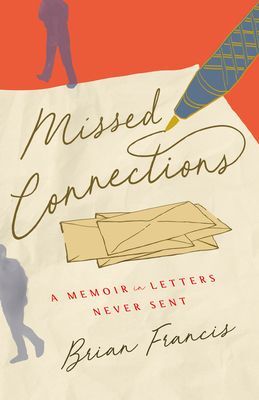
I stumbled across this book in a most old-fashioned away — seeing it on the shelf at the bookstores — and that seems appropriate, because it’s about an old-fashioned experience. Brian Francis writes about the time that, as a young gay man in the early 1990s, barely out of the closet, he placed a personal ad in the newspaper. None of the replies he got panned out into a lifelong love, though he did meet up with a few of the respondents. He also held on to several letters he never answered, and now, as an older man, he goes back to those letters and writes what he would like to say to those men all these years later. It’s an intriguing way to structure a memoir about coming out, growing up, and re-evaluating the person you were and the person you’ve become. This was a wonderful, quick read that I thoroughly enjoyed.
The Jane Austen Society, by Natalie Jenner

This was a quick and fairly light read about villagers in the English village of Chawton forming an unlikely alliance to try to save Jane Austen’s family home and preserve it as a historic site. This actually did happen in the same post-WW2 era in which the novel is set, but this is a work of fiction. The varied cast of characters — a movie star, a grieving war widow, a troubled small-town doctor, a bright and ambitious servant girl, and a few others — who form the Jane Austen Society in this novel, are not the same people who actually came together to do that work in real life, nor are the circumstances of the way the property came down through Austen family descendants historically accurate. This is fine, of course, but it did feel slightly jarring to have a story inspired by real events in such recent history in which all the characters were fictional. It didn’t put me off enjoying the novel (or wanting to read the sequel, which I have on hold at the library) but it did make me think, as I so often do, about the boundaries of historical fiction versus historical fact.
Please Scream Inside Your Heart, by Dave Pell

This is another one I listened to as an audiobook which is hard to categorize, although I did really enjoy it. It’s an almost day-by-day journey through 2020 from the perspective of someone who admittedly consumes way too much media (Pell produces an online newsletter called NextDraft that offers “a quick and entertaining look at the day’s most fascinating news”); it’s a summary of American’s twin obsessions in that year — Donald Trump and Covid-19 — and how they were entwined; it’s also a memoir of Pell’s own personal and family response to the events of the year. The family perspective is particularly interesting as both Pell’s parents were Holocausts survivors, and their observations about the growing right-wing movement in the United States form a backdrop to the ever-escalating crises of life in 2020 America.
Tomorrow, and Tomorrow, and Tomorrow, by Gabrielle Zevin
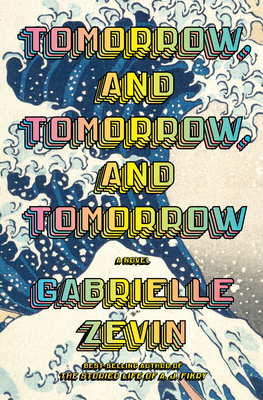
I absolutely adored this novel. I’ve really enjoyed Gabrielle Zevin’s last two novels, Young Jane Young and The Storied Life of AJ FIkry, but this was my favourite of them by far. I read it in 24 hours, almost all while lying in my hammock in the back yard — is there a more perfect summer day than one where you have nothing to but read and it’s warm enough to read in the hammock??! (No there is not).
Tomorrow and Tomorrow and Tomorrow is a novel about friendship. It’s about a lot of other things, of course, including video games, both as the backdrop of the story (main characters Sam and Sadie team up as video-game developers, and much of the plot is about their career as friends and co-workers, and how the ups and downs of their business affect their personal relationship). It’s also about loss, grief, and so many other things. But mostly it is a deeply absorbing knowledge about the ties that bind people who have been in each other’s lives for decades, about the ways in which we hurt the people we love and how (or sometimes, if) it’s possible to forgive them. Wonderful book.
September 19, 2022
Daughters of the Deer, by Danielle Daniel
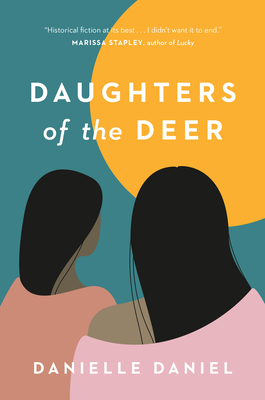
In my own process of researching and writing a book series about early English colonization, one thing I’ve said several times is that I wish there was more historical fiction exploring that period written by Indigenous writers, telling the story from the point of view of the colonized rather than the colonizers. I don’t know a whole lot about writer Danielle Daniel, for example whether she is a member of any First Nation, but I do know that she claims both French and Indigenous ancestry and the story she tells in Daughters of the Deer is drawn from her own family history in those early decades of French colonization in Canada, so it is definitely the kind of thing I’ve been wanting to read. It focuses on Marie, and Algonquin woman, who is pressured by her community into marrying a Frenchman, Pierre, and raising their children as French Catholics. Marie tries to keep some of her own religion and culture alive in herself and in her children, but when her daughter grows up to fall in love with another woman — something that was accepted in Marie’s own community, but deeply taboo in Catholic New France — a clash of cultures is inevitable. I was glad to find this book and would love to read more historical fiction written from an Indigenous perspective.
August 8, 2022
Kaikeyi, by Vaishnavi Patel
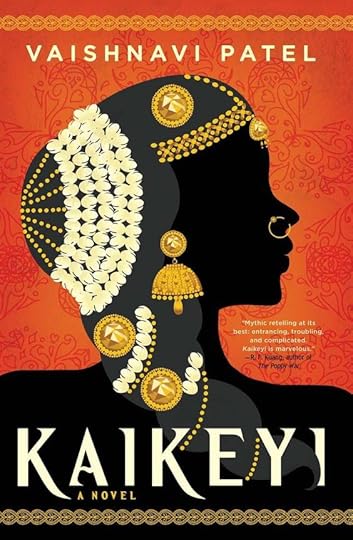
In trying to categorize this book for this blog, I marked it as both “historical fiction” and “fantasy” because it has elements of both. The novel tells the story, not exactly of the Hindu epic Ramayana but rather of the backstory leading up to it. More specifically, as the title indicates, it is the story of Kaikeyi, who in most tellings of the saga gets the godlike Prince Rama exiled to the forest out of her jealousy because she wants her own son to succeed to the throne instead of his half-brother Rama.
As with the last book I just read about Freydis Eriksdottir, this novel takes a woman maligned in legend and tells the story from her point of view. While I don’t know the Hindu epics very well, my point of entry to the Ramayana is the movie Sita Sings the Blues, so I’m already predisposed to think of Rama as less than perfect (even if he was an avatar of Vishnu) and to see the story through the eyes of the women characters.
Kaikeyi is a compelling, fascinating woman, one who believes herself from childhood to be forsaken by the gods, their ears deaf to her pleas. She is not, however, jealous of Rama; she loves him and all the other sons of her husband’s other wives equally; the picture here is of a large, loving family in which three sister-wives all get along and share in raising each other’s children. Kaikeyi’s concerns about Rama spring from a different place altogether: as the young man becomes more convinced of his divine origin and destiny, he comes into conflict with all three of his mothers, particular Kaikeyi, in their attempts to improve women’s lot in the kingdom. A rigid, “fundamentalist” approach to the wishes of the gods clashes with a more progressive view, and Kaikeyi begins to see Rama as more of a danger than a savior.
While the story is clearly set in a past India, it’s a mythic one rather than one tied to a particular historical era. The gods and their interventions in human life are very real, as is Kaikeyi’s mystical power to see connections between herself and other people as visible lines, like auras, and influence those connections to become stronger or weaker. The story is rich, vivid, and compelling, and feels like being immersed in a myth.
The Voyage of Freydis, by Tamara Goranson

The Voyage of Freydis takes the tale of Freydis Eriksdottir, a minor character who is mentioned in a brief but enignmatic fragment of the sagas about Greenlanders making their way to the place they called Vinland — now presumed to be the Norse settlement site at L’anse aux Meadows, Newfoundland — in the 11th century. Because women are so often nameless and absent in these types of historical accounts, it’s almost irresistible for historical fiction writers to try to build a story around the rare woman who does have a name and is depicted as doing something. Tamara Goranson is not the first writer to take on Freydis’s story; in fact, I read Joan Clark’s novel Eriksdottir, also about Freydis. However, that book came out in 1994 and I probably read it then or within a few years afterwards, so I sadly can’t remember anything about Clark’s take on the story.
The details that are captured about Freydis (a sister of the famous explorer Leif “the Lucky” Erikson) in the sagas are hard to make a sympathetic story out of, as she is depicted as ruthlessly murdering a bunch of fellow explorers. A good novelist will tell the story so that her actions makes sense in context; a good novelist will also be aware that what comes down to us in sagas and historical records is not always an accurate reflection of how real people might have behaved.
In this novel, Goranson has given us a believable and sympathetic Freydis trapped in an abusive marriage to a brutal man. The lengths she goes to to get free and stay free from her husband are what drive the novel’s action. There were times when the language, especially in dialogue, did not draw me into the story as much as I’d hoped, and a few possible anachronisms that pulled me out of the story. But as a reader and writers who is always interested in the erased or mistold stories of women in history, I was very interested in this take on the Viking story.
A Prayer for the Crown-Shy, by Becky Chambers

I don’t want to spend too much time here re-capping what this book is about: if you’re unfamiliar with this series, read my review of the first book in this series, A Psalm for the Wild-Built. Discovering it last year, I fell in love with the gentle post-apocalyptic near-utopia that Chambers has created, and with Sibling Dex and their robot companion Mosscap, whose story picks up in this volume immediately after the end of the previous book.
Mosscap, the first robot to re-engage with humanity after centuries of the two species living separately, is about to meet humans other than Dex, and it’s exciting for everyone concerned — but also confusing. The various encounters Mosscap and Dex have with people along their journey to the big city — including Dex’s large, lovely, complicated family — are described with lovely, often humourous insight. But when we reach what we expect to be the climax of the story — Mosscap’s presentation to the people of the city – the story takes an unexpected turn.
I loved reading this short book just as much as its prequel, and read it very quickly. If I have a criticism it’s only to say that I hope there is a third book coming, because this book is great on atmosphere and character development but a little light on plot, and there are things I would like to see developed and resolved further. But I can never get enough of the world Chambers has created in these novels.
What Souls Are Made Of, by Tasha Suri

What Souls Are Made Of is the second book I’ve read in the series of “remixed classics” in which writers of colour or writers otherwise marginalized reimagine classics of the Western canon. The first one of these I read was Bethany C. Morrow’s So Many Beginnings, a Little Women remix which I enjoyed although I felt some storylines needed to be developed more. What Souls Are Made Of is a Wuthering Heights remix, and even without the twist of it being imagined by a writer of South Asian heritage, any retelling of WH that can make Heathcliff anything other than an absolutely repugnant villain deserves big props right from the get go.
Tasha Suri, who I’ve known best up till now as a fantasy writer, re-imagines Emily Bronte’s classic story of doomed, self-destructive love through the lens of British colonialism in the Indian subcontinent. The main characters Cathy, her brother Hindley, and the orphan child Heathcliff who comes to live with them, are all of mixed Indian and English ancestry; Cathy and Hindley are the children of an Indian mistress their father lived with while working overseas with the British East Indian Company. Heathcliff is the child of an Indian sailor and an Englishwoman; the elder Mr. Earnshaw’s strange act of adopting this orphan makes sense in the context of his guilt over abandoning his Indian mistress and another child there, and in the larger picture of his guilt over the impact of colonialism on the people he knew in that country.
Cathy and Heathcliff’s love seems as doomed and fated as in the original novel, but unlike Bronte, Suri devotes a good portion of the book to what Heathcliff does when he leaves Wuthering Heights as a young man. She follows him to Liverpool, where he becomes part of a group of marginalized, poor, mixed-race people in that port city, and confronts both his own past and an uncertain future. In WH, Heathcliff returns from his time away having mysteriously become wealthy, and uses that newfound wealth and power to exact brutal revenge on everyone who was ever cruel to him. What Souls Are Made Of shows a plausible path to how Heathcliff might have amassed wealth and power, and how he might have desired revenge — but this version of Heathcliff may be capable of making different choices than Bronte’s Heathcliff, and may even be able to change the end of his story.
You’ll have to read it to find out.
Constant Nobody, by Michelle Butler Hallett
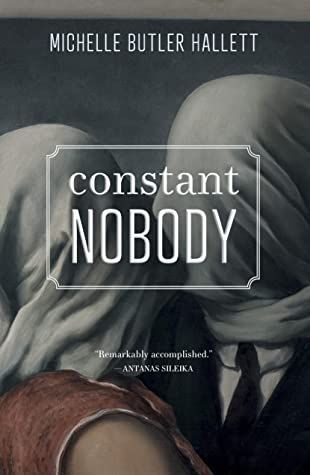
It’s hard to believe I haven’t already posted a review of this wonderful novel, which recently won Atlantic Canada’s most prestigious literary prize: the Thomas Raddall Atlantic Fiction Award. I had already read it, but, as is often the case with those of us who live in a small and close-knit literary community, I read it in manuscript form and offered some critique to the author, who is a friend. However, reading the finished book was such a completely different and much more overwhelming experience.
At its most basic level, Constant Nobody is a literary spy story that begins against the background of the Spanish Civil War, when British spy Temerity West has a chance encounter with Russian spy Kostya Nikto. Months later, when Kostya is back home in Moscow, they meet again. Temerity is now living the exceptionally dangerous life of a British agent undercover in Stalin’s USSR when Kostya finds her and (maybe) saves her life. For long, agonizing weeks, as Temerity hides out in Kostya’s apartment, the two are bound together by secrets, lies, intrigue, attraction, and danger.
It’s a love story, of course, but it’s so much more than that: these two people are drawn together, and owe much to each other, but can never come close to trusting each other. In fact, they can trust nobody: one of the things this novel does most strikingly is recreate the claustrophobic atmosphere of Moscow under Stalin’s purges. Kostya is a respected KGB officer, yet neither he nor any of his fellow officers can feel any sense of security, nor can any of them trust each other. Kostya’s privileged life is almost as precarious as Temerity’s illicit presence in the city; the dreaded knock could come on anyone’s door, at any moment.
This is a beautifully-written and tightly constructed novel of intrigue, suspense, and thoughtful reflection all interwoven into the story of two unforgettable characters.



